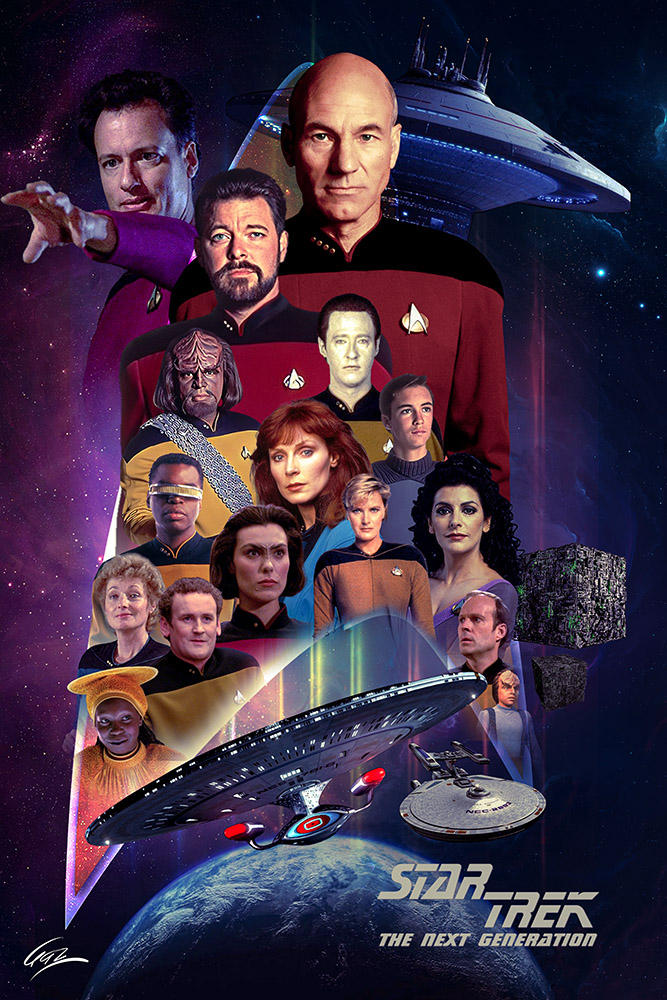Why did Star Trek: The Next Generation's cast achieve such remarkable chemistry? A bold statement reveals the truth: this ensemble thrived because of Gene Roddenberry’s vision and Jonathan Frakes’ leadership. Their collaborative spirit transformed a television set into a family unit, setting a standard few productions have matched.
From its debut in 1987 to its conclusion in 1994, Star Trek: The Next Generation captivated audiences worldwide. However, behind the scenes, the journey was not without challenges. Initially plagued by toxic work environments and grueling conditions, the show gradually evolved into a harmonious production. This transformation hinged on mutual respect among the actors, coupled with innovative storytelling techniques championed by creator Gene Roddenberry. Patrick Stewart, portraying Captain Jean-Luc Picard, brought gravitas and intellectuality to his role, while Brent Spiner's portrayal of Data showcased humanity through artificial life. Meanwhile, Jonathan Frakes' performance as Commander William Riker resonated deeply with fans who saw him as an embodiment of leadership potential. Despite early struggles, these elements coalesced to create something extraordinary—a series that redefined science fiction television.
| Full Name | Jonathan Adam Frakes |
|---|---|
| Date of Birth | August 19, 1952 |
| Place of Birth | Cleveland, Ohio, USA |
| Education | Bachelor of Arts in Theatre from Bowling Green State University |
| Spouse | Molly Price (married since 1986) |
| Children | Two daughters: Olivia Rose Frakes and Charlotte Claire Frakes |
| Career Highlights |
|
| Awards & Nominations |
|
| Professional Website | Official Jonathan Frakes Website |
The camaraderie shared by the main cast members—Patrick Stewart, Jonathan Frakes, LeVar Burton, Marina Sirtis, Brent Spiner, Michael Dorn, Gates McFadden, and Majel Barrett—was palpable both on-screen and off. Preliminary casting began in March 1987, culminating in the announcement of the core ensemble just two months later. Each actor brought unique qualities to their respective roles, enriching the narrative tapestry. For instance, Marina Sirtis infused warmth into Deanna Troi's empathic nature, while Michael Dorn lent gravitas to Worf's Klingon heritage. Together, they formed a cohesive unit capable of tackling complex themes ranging from ethics to existential dilemmas.
Despite the initial difficulties faced during the first season, including long hours and demanding schedules, the cast eventually found common ground. They attributed much of their success to Gene Roddenberry's unwavering support and Jonathan Frakes' ability to bridge creative differences. As the series progressed, it became evident that the interpersonal dynamics among the actors played a pivotal role in shaping the show's enduring legacy. Even after the series concluded, many cast members maintained close ties, participating in conventions and charity events together.
Interestingly, comparisons between Star Trek: The Next Generation and subsequent iterations like Deep Space Nine highlight distinct tonal shifts. While DS9 embraced serialized storytelling and darker narratives, TNG remained steadfast in its episodic format, focusing on morality plays and character development. Fans often noted how each iteration appealed differently depending on individual preferences; however, all agreed that the original magic of Starfleet exploration endured across platforms.
In analyzing what made certain periods more challenging than others, one cannot overlook the structural issues present early in the production process. Poor communication channels contributed significantly to dissatisfaction among some crew members and actors alike. Over time, improvements were implemented, ensuring smoother operations moving forward. These adjustments allowed the cast to focus less on logistics and more on delivering compelling performances week after week.
Ultimately, the bond forged among the principal players ensured that Star Trek: The Next Generation would stand the test of time. Through perseverance and dedication, they created a universe where diversity thrived, and possibilities seemed limitless. Their collective efforts continue to inspire new generations of fans and creators alike, proving once again that great art arises when talented individuals come together under shared ideals.



